It looks like you're using an Ad Blocker.
Please white-list or disable AboveTopSecret.com in your ad-blocking tool.
Thank you.
Some features of ATS will be disabled while you continue to use an ad-blocker.
share:
Greetings, ATS!
Today I bring you something I find fascinating…..a closer look at cryptids that science now acknowledges as genuine creatures.
To better understand the field of cryptozoology, we need to recognize the criteria needed for mainstream science to formally identify an animal as a new species. This process can be long and quite formal, with many scientists refusing to acknowledge the existence of said creature without a body to study.
en.wikipedia.org... George M. Eberhart of the American Library Association,[6] who has written for the Journal of Scientific Exploration on the difficulties of cataloging media materials about fringe science, classifies ten types of mystery animals under the cryptozoological umbrella:
1. Distribution anomalies [known animals reported outside their normal range, e.g. the anomalous big cats of the U.K.];
2. Undescribed, unusual, or outsized variations of known species [e.g. the giant anacondas reported from Amazonia or the spotted lions of East Africa];
3. Survivals of recently extinct species [e.g. Ivory-billed Woodpecker presumed extinct ca. 1960, or the Steller's Sea Cowpresumed extinct ca. 1770, both of which are occasionally claimed to have survived to the present];
4. Survivals of species known only from the fossil record into modern times [e.g. the mokele-mbembe of central Africa, sometimes described as a living dinosaur];
5. Lingerlings, or survivals of species known from the fossil record much later into historical times than currently thought [e.g. the woolly mammoth, presumed extinct ca. 12,000 BCE but occasionally purported surviving into later eras];
6. Animals not known from the fossil record but related to known species [e.g. the Andean wolf or the striped manta-ray reported by William Beebe in the 1930s];
7. Animals not known from the fossil record nor related to any known species [e.g. North America's Bigfoot or most sea serpents];
8. Mythical animals with a zoological basis [e.g. the Griffin, partly inspired by dinosaur fossils of Central Asia];
9. Seemingly paranormal or supernatural entities with some animal-like characteristics [e.g. Mothman, Black Dogs or some fairiesfrom folklore];
10. Known hoaxes or probable misidentifications [e.g. the Jackalope, an antlered rabbit created as a hoax or prank, but possibly inspired by rabbits infected with Shope papilloma virus, which causes antler-like tumors].
There’s also the concept of “ethnoknown” creatures; basically, animals that are acknowledged as real by local peoples but not formally identified by science. Many cryptids that later were scientifically verified were known to exist by local people for centuries. In many cases, these animals have been described by the local people but remained elusive (perhaps due to dwindling numbers?).
www.paranormalhaze.com...
So….lets take a look at some real, flesh-and-blood animals once deemed cryptid by mainstream science, shall we?
First up….The Devil Bird of Sir Lanka

Next…The African Unicorn (AKA the Okapi)
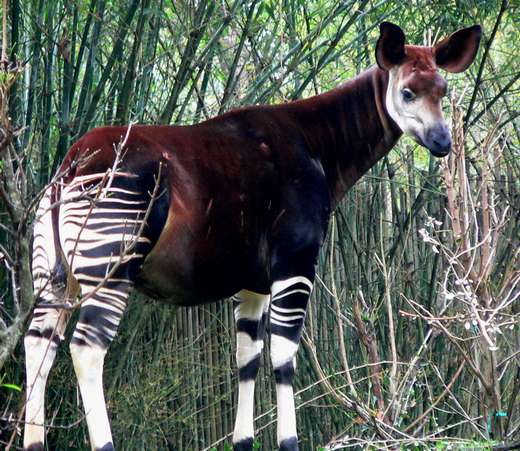
Today the Okapi is officially recognized, and is considered to be a living fossil (see cryptid classifications above).
The Duck-Mole (aka the Platypus)
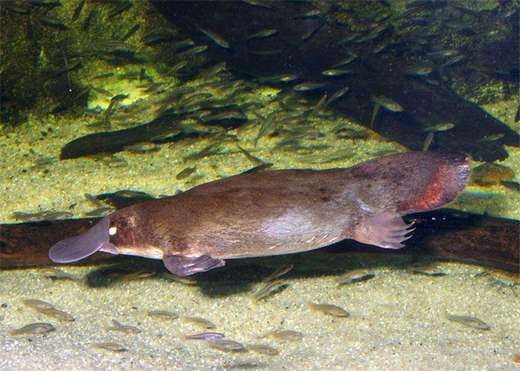
Let’s face it. If someone described a platypus to you, you’d most likely be highly skeptical. And that’s exactly what happened when Westerners first encountered tales of the Duck-Mole.
The platypus was officially recognized in the 1800s. Good news for Phinneas and Ferb.
Bring out the Kraken! (aka the Giant Squid)

The Bondegezou of Western Indonesia
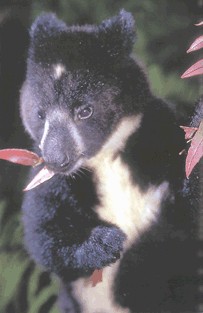
Continued in next post....
Today I bring you something I find fascinating…..a closer look at cryptids that science now acknowledges as genuine creatures.
To better understand the field of cryptozoology, we need to recognize the criteria needed for mainstream science to formally identify an animal as a new species. This process can be long and quite formal, with many scientists refusing to acknowledge the existence of said creature without a body to study.
en.wikipedia.org... George M. Eberhart of the American Library Association,[6] who has written for the Journal of Scientific Exploration on the difficulties of cataloging media materials about fringe science, classifies ten types of mystery animals under the cryptozoological umbrella:
1. Distribution anomalies [known animals reported outside their normal range, e.g. the anomalous big cats of the U.K.];
2. Undescribed, unusual, or outsized variations of known species [e.g. the giant anacondas reported from Amazonia or the spotted lions of East Africa];
3. Survivals of recently extinct species [e.g. Ivory-billed Woodpecker presumed extinct ca. 1960, or the Steller's Sea Cowpresumed extinct ca. 1770, both of which are occasionally claimed to have survived to the present];
4. Survivals of species known only from the fossil record into modern times [e.g. the mokele-mbembe of central Africa, sometimes described as a living dinosaur];
5. Lingerlings, or survivals of species known from the fossil record much later into historical times than currently thought [e.g. the woolly mammoth, presumed extinct ca. 12,000 BCE but occasionally purported surviving into later eras];
6. Animals not known from the fossil record but related to known species [e.g. the Andean wolf or the striped manta-ray reported by William Beebe in the 1930s];
7. Animals not known from the fossil record nor related to any known species [e.g. North America's Bigfoot or most sea serpents];
8. Mythical animals with a zoological basis [e.g. the Griffin, partly inspired by dinosaur fossils of Central Asia];
9. Seemingly paranormal or supernatural entities with some animal-like characteristics [e.g. Mothman, Black Dogs or some fairiesfrom folklore];
10. Known hoaxes or probable misidentifications [e.g. the Jackalope, an antlered rabbit created as a hoax or prank, but possibly inspired by rabbits infected with Shope papilloma virus, which causes antler-like tumors].
There’s also the concept of “ethnoknown” creatures; basically, animals that are acknowledged as real by local peoples but not formally identified by science. Many cryptids that later were scientifically verified were known to exist by local people for centuries. In many cases, these animals have been described by the local people but remained elusive (perhaps due to dwindling numbers?).
www.paranormalhaze.com...
So….lets take a look at some real, flesh-and-blood animals once deemed cryptid by mainstream science, shall we?
First up….The Devil Bird of Sir Lanka

n the island country of Sir Lanka in Southeast Asia a strange bird with devil horns and the shriek of a human has been a part of local legends for generations. The bird, called Ulama by the locals and Devil Bird by visiting westerners, is rarely seen but is often heard in the form of a shrill shriek that resembles that of a human woman’s scream. The screams are believed by locals to be an omen of death and many folklorists have connected this legend with the well-known Irish legends of the Banshee.
Then, in 2001, a rare owl that was not known to be indigenous to the area was discovered to inhabit the vast forests of Sir Lanka. This owl has patches of feathers above its eyes that rise off the head like horns and it emits a screeching sound that is similar to that of a human. It matched the description of the Ulama perfectly. Picture
Next…The African Unicorn (AKA the Okapi)

Many western explorers came back home from the African Congo with tales that they had heard from local tribes about a rain forest horse that was a mix between a giraffe and a zebra. Most dismissed these stories as the tall-tales of explorers looking for glory until the 20th century when western scientists finally recognized this animal’s existence. The strange thing about this animal, though, is that there was evidence for its existence all around us that we simply ignored. The animal was depicted in the art of the Egyptians and explorers even brought back strange zebra like pelts, but all of these were disregarded as hoaxes or legends. It was regarded as such a ridiculous myth that westerners coined the term “African Unicorn” to describe this animal.
Today the Okapi is officially recognized, and is considered to be a living fossil (see cryptid classifications above).
The Duck-Mole (aka the Platypus)

Let’s face it. If someone described a platypus to you, you’d most likely be highly skeptical. And that’s exactly what happened when Westerners first encountered tales of the Duck-Mole.
Now imagine you are an explorer, just back from Australia trying to describe a new species you discovered that swims like an amphibian, has hair like a mammal, is poisonous like a reptile, and has a beak and lays eggs like a bird. Odds are you will be laughed at and your discovery would be considered a hoax and that is pretty much what happened in real life when explorers tried to tell biologists what they seen in Australia. Even when explorers brought back a stuffed Platypus, some were still insistent that this animal did not exist. It is an animal that just seems to make no sense at all.
The platypus was officially recognized in the 1800s. Good news for Phinneas and Ferb.
Bring out the Kraken! (aka the Giant Squid)

For centuries tales of a giant squid-like creatures attacking ships were written off as the tall-tales of sailors. Large specimens of squid-like creatures had been obtained in the 1800s but this was not conclusive enough to completely confirm the actually existence of a massive squid. Then, in the 21st century, live specimens were caught and photographed proving the existence of these creatures that were once regulated to myths and legends.
The Bondegezou of Western Indonesia

The Bondegezou (“man of the forests”) is a legendary, ancestral spirit of the Moni people in Western Indonesia. Described as a tree-dwelling creature, the Bondegezou resembles a small man covered in black and white fur. It is said to be a tree climber, but often stands on the ground in a bipedal stance. In the 1980s, a photograph of the Bondegezou was sent to Australian research scientist Tim Flannery, who initially identified the creature as a young tree kangaroo. But in May, 1994, Flannery conducted a wildlife survey of the area and discovered that the animal in the picture was new to science. The Dingiso (Dendrolagus mbaiso), as the creature is also known, is a forest-dwelling marsupial with bold coloration that spends most of its time on the ground. The Dingiso remains a rare sight – the first real evidence of the creature was only skins, and to this day, no Dingiso exists in captivity.
Continued in next post....
edit on 20-3-2013 by smyleegrl because: (no reason given)
The Mountain Gorilla
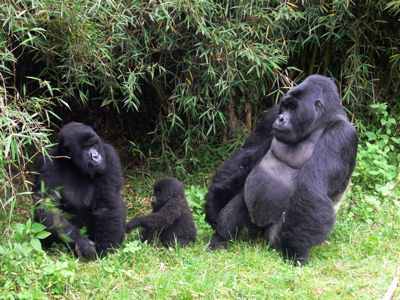
So there you have it, ATS. _____ cryptids that turned out to be real. Makes you wonder….what else may be proven real?
source

For centuries, tales of large “ape-men” in East Africa have captivated explorers and natives alike. Numerous tribes have legends of massive, hairy creatures that would kidnap and eat humans, overpowering them with their ferocity and strength. The creatures go by many names, among them ngila, ngagi, and enge-ena. In the sixteenth century, English explorer Andrew Battel spoke of man-like apes that would visit his campfire at night, and in 1860, explorer Du Chaillu wrote of violent, bloodthirsty forest monsters. Up until the twentieth century, many of these tales were ignored or discounted.
So there you have it, ATS. _____ cryptids that turned out to be real. Makes you wonder….what else may be proven real?
source
edit on 20-3-2013 by smyleegrl because: (no reason given)
This is very interesting, thank you
I didn't know about the Dingiso. I thought "Oh, it looks like a bear"... then I looked up some images:
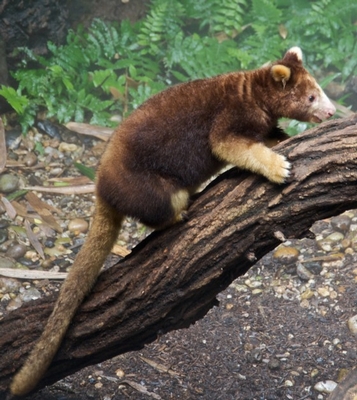
Look at that tail!
I would have been surprised if I had seen one of these in real life.
I also found this about other animals that were thought to be a myth:
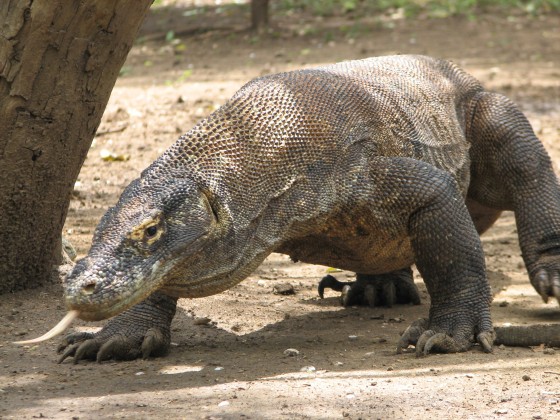
Now, of these I DID know. I'm absolutely terrified of them. Thankfully, you don't find them roaming the streets.
I didn't know about the Dingiso. I thought "Oh, it looks like a bear"... then I looked up some images:

Look at that tail!
I would have been surprised if I had seen one of these in real life.
I also found this about other animals that were thought to be a myth:
Komodo Dragon
A pearl Fisherman went back to an island in indonesia, only to be welcomed with tales of the so-called land crocodiles. And the rest is history. W. Douglas Burden introduced a lizard that stretches to ten feet with fangs that is venomous and claws that can kill any creature.

Now, of these I DID know. I'm absolutely terrified of them. Thankfully, you don't find them roaming the streets.
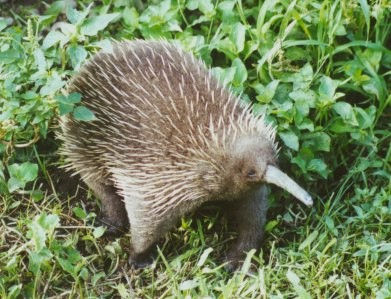
Long-beaked Echidna
Male echidnas have a four-headed penis. During mating, the heads on one side "shut down" and do not grow in size; the other two are used to release semen into the female's two-branched reproductive tract.
Source en.wikipedia.org...
Imagine trying to explain this creature.
edit on 20-3-2013 by amraks because: forgot source link
Definitely one of the cooler threads!
Nice break from the doom porn, and cult like BS on this site.
Nice break from the doom porn, and cult like BS on this site.
People have been working on this stuff for ages to get this far in the scientific world. I guess if you wish and try hard enough, anyone can find
something odd and undiscovered. I am sure there is all kind of crazy going on in the jungles of South America and deep in the Amazon rain forest.
Western explores have only really been deep in the bush a few times because of the danger and unknown involved in long distance travel. There are also
non-contact tribes deep in those jungles which are off limits to explorers. Just think of the crazy creatures who might be living deep in the Amazon.
Interesting thread. I remember learning about how mountain gorillas were considered a fabled creature until recent times. Just as the Coelacanth was
considered to be extinct since the late Cretaceous, other "non-existent" or "extinct" animals may very well be lurking about, either on land or in
the dark depths of the world's oceans. Only time will tell what is currently alive or not. Interesting topic! Thanks!
Cool thread Reminded me of a critter I saw on a tv show once. The show called it the gilled deer, but that is
wrong.Link It is actually called the saola.
www.gentside.com..." target='_blank' class='tabOff'/>[e x]Saola mark their territories by opening up a fleshy flap on their snout to reveal scent glands. They subsequently rub the underside against objects leaving a musky, pungent paste. The saolas' colossal scent glands are thought to be the largest of any living mammal. At the time I saw the show in the early 90's they mentioned how the locals had reports of them for years yet it took to 1992 before they were proven to exisit.
www.gentside.com..." target='_blank' class='tabOff'/>[e x]Saola mark their territories by opening up a fleshy flap on their snout to reveal scent glands. They subsequently rub the underside against objects leaving a musky, pungent paste. The saolas' colossal scent glands are thought to be the largest of any living mammal. At the time I saw the show in the early 90's they mentioned how the locals had reports of them for years yet it took to 1992 before they were proven to exisit.
Originally posted by smyleegrl
7. Animals not known from the fossil record nor related to any known species [e.g. North America's Bigfoot...
Gigantopithecus is the leading contender for a real-life animal that could be or is related to the creature known as Bigfoot or Sasquatch. Supposedly it died out about 100,000 years ago. There's been debate on whether Gigantopithecus was bipedal or walked like a gorilla.
Images
Theory
The Ape That Was
Cool thread the platypus always intrigued me as a kid, even more so when I found out it was poisonous as an adult.
Cool post, love reading stuff like this. The world is a big place filled with so much that we still have no idea about.
I got 2 other things to add to that list of elusive creatures in this world: a politician that does not lie and a politician that has common sense/brains . These creatures are near extinct if they even exist at all
I got 2 other things to add to that list of elusive creatures in this world: a politician that does not lie and a politician that has common sense/brains . These creatures are near extinct if they even exist at all
Hey Smylee,interesting thread-i made a thread soon after i joined here,and i think some members thought i was taking the piss,but this thing is
real,and i've spotted it again after the thread,but its only visible at night.Pity i still can't afford a decent camera with night vision,but its SO
fast,and appears so out of the blue when it does,i doubt i could catch it anyway.
This is a thing that zaps through the sky here,trailing an orange fire-y trail behind it.I think it lives in the game reserve next to my yard,i've seen it come out of there,and i've seen it return there,so maybe it has some sort of nest.It can rise vertically,in flight it does so horizontally,its the Weirdest,weirdest thing.Its not fireflies either,I've estimated it's size to be around that of a dove,maybe slightly bigger,but of course that may be off.I used to wonder if it was a nature spirit,but it could more likely be some strange cryptid.It can fly at very high speed,and always the orange fire-trail in its wake-or a part of it.I found a vid on YT the other day,lemme see if i can get hold of it now.There's a picture of a critter in there,that for some reason makes me think of the flier here.
This is a thing that zaps through the sky here,trailing an orange fire-y trail behind it.I think it lives in the game reserve next to my yard,i've seen it come out of there,and i've seen it return there,so maybe it has some sort of nest.It can rise vertically,in flight it does so horizontally,its the Weirdest,weirdest thing.Its not fireflies either,I've estimated it's size to be around that of a dove,maybe slightly bigger,but of course that may be off.I used to wonder if it was a nature spirit,but it could more likely be some strange cryptid.It can fly at very high speed,and always the orange fire-trail in its wake-or a part of it.I found a vid on YT the other day,lemme see if i can get hold of it now.There's a picture of a critter in there,that for some reason makes me think of the flier here.
At 2:30-2:34 The moment i saw that,it reminded of the lil fire-flier we have here.
Btw,check out the gorgeous cheetah with the unusual markings in this vid!
edit on 21-3-2013 by Raxoxane because: forgot something
Does the Coelacanth qualify as a Cryptid?
en.wikipedia.org...
Interesting thread, I always enjoy images of nature's creatures.
Thanks for posting
edit on 21-3-2013 by seattlerat because: added link to image
reply to post by Raxoxane
Oh, man, those videos are always fun to watch on a slow day. However I could prove half of those pictures to be hoaxed right now (as is the way with the nature of those videos).
The cheetah at 2:10 (in the vid) is a proven criptid. It is called the King Cheetah and is a very rare genetic trait.
Here is a video that talks about it. Once I started watching these videos, I got hooked.
Name: Arthur C. Clarkes mysterious world cryptozoology 2 of 3
URL: www.youtube.com...
Cheers
Oh, man, those videos are always fun to watch on a slow day. However I could prove half of those pictures to be hoaxed right now (as is the way with the nature of those videos).
The cheetah at 2:10 (in the vid) is a proven criptid. It is called the King Cheetah and is a very rare genetic trait.
Here is a video that talks about it. Once I started watching these videos, I got hooked.
Name: Arthur C. Clarkes mysterious world cryptozoology 2 of 3
URL: www.youtube.com...
Cheers
reply to post by smyleegrl
The orangutan was also considered to be a local legend by Europeans visiting Sumatra in the 18h century. They weren't accurately cataloged until the late-1700s.
The orangutan was also considered to be a local legend by Europeans visiting Sumatra in the 18h century. They weren't accurately cataloged until the late-1700s.
Last year i was listening to a radio show here in Scotland and a Police officer(Helicopter) was on talking about a time he and his co pilot were
looking for a missing woman in Edinburgh...(Edinburra)...
they were flying around the Arthurs seat area looking through the heat detection
sight thing when they spotted a heat source,
He said they were in contact with other officers on the ground and guiding them towards the heat source,
One female officer was being guided towards the source when they had to tell her not to move a muscle as a large cat got up and walked away....
I would so love to have seen the video as i know for sure they must have it somewhere...i may do a freedom of information request to see if i can find it...never saw it on the news or anywhere for that matter but the video must exist in there vault or for training purposes surely..
they were flying around the Arthurs seat area looking through the heat detection
sight thing when they spotted a heat source,
He said they were in contact with other officers on the ground and guiding them towards the heat source,
One female officer was being guided towards the source when they had to tell her not to move a muscle as a large cat got up and walked away....
I would so love to have seen the video as i know for sure they must have it somewhere...i may do a freedom of information request to see if i can find it...never saw it on the news or anywhere for that matter but the video must exist in there vault or for training purposes surely..
edit on 21-3-2013 by Soloprotocol because: (no reason given)
new topics
-
Mind Blowing Cave under someones land
Fragile Earth: 53 seconds ago -
The Party of Peace - Trump Cabinet Picks Targeted with Death Threats
US Political Madness: 1 hours ago -
V.P. Kamala Harris releases a video and nobody understands why
US Political Madness: 4 hours ago -
D.B. Cooper mystery may be solved
General Conspiracies: 8 hours ago
top topics
-
D.B. Cooper mystery may be solved
General Conspiracies: 8 hours ago, 18 flags -
V.P. Kamala Harris releases a video and nobody understands why
US Political Madness: 4 hours ago, 14 flags -
The Party of Peace - Trump Cabinet Picks Targeted with Death Threats
US Political Madness: 1 hours ago, 6 flags -
Mind Blowing Cave under someones land
Fragile Earth: 53 seconds ago, 0 flags
active topics
-
-@TH3WH17ERABB17- -Q- ---TIME TO SHOW THE WORLD--- -Part- --44--
Dissecting Disinformation • 3385 • : Thoughtful3 -
Mind Blowing Cave under someones land
Fragile Earth • 0 • : onestonemonkey -
I thought Trump was the existential threat?
World War Three • 96 • : namehere -
V.P. Kamala Harris releases a video and nobody understands why
US Political Madness • 33 • : CarlLaFong -
Well, here we go red lines crossed Biden gives the go ahead to use long range missiles
World War Three • 401 • : Xtrozero -
Interesting Video-UFO?
Aliens and UFOs • 19 • : Schmoe3755 -
The Party of Peace - Trump Cabinet Picks Targeted with Death Threats
US Political Madness • 3 • : matafuchs -
Post A Funny (T&C Friendly) Pic Part IV: The LOL awakens!
General Chit Chat • 7835 • : underpass61 -
Petition Calling for General Election at 564,016 and rising Fast
Political Issues • 100 • : Oldcarpy2 -
Federal law trumps state and local law every time
Social Issues and Civil Unrest • 32 • : marg6043
